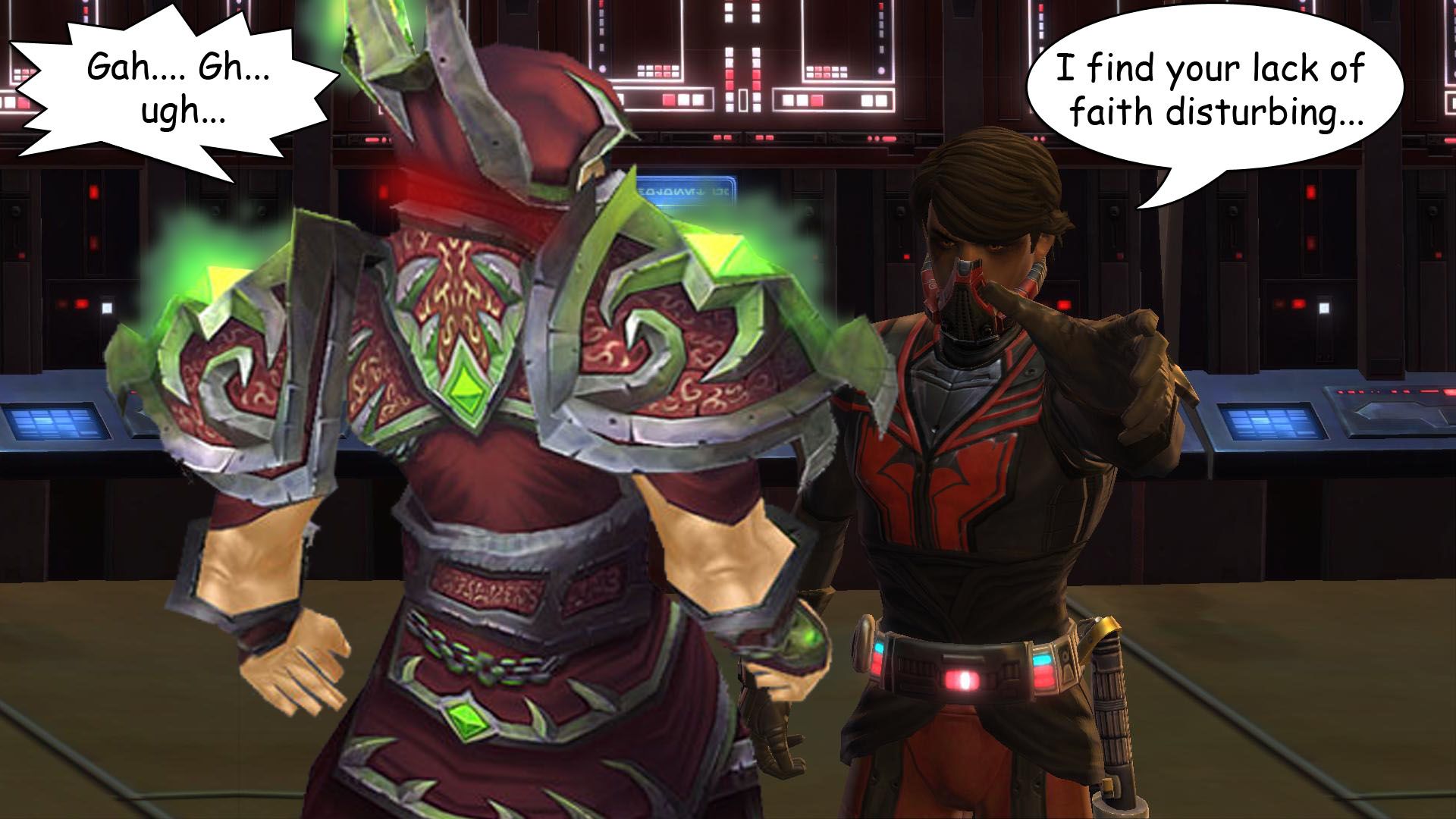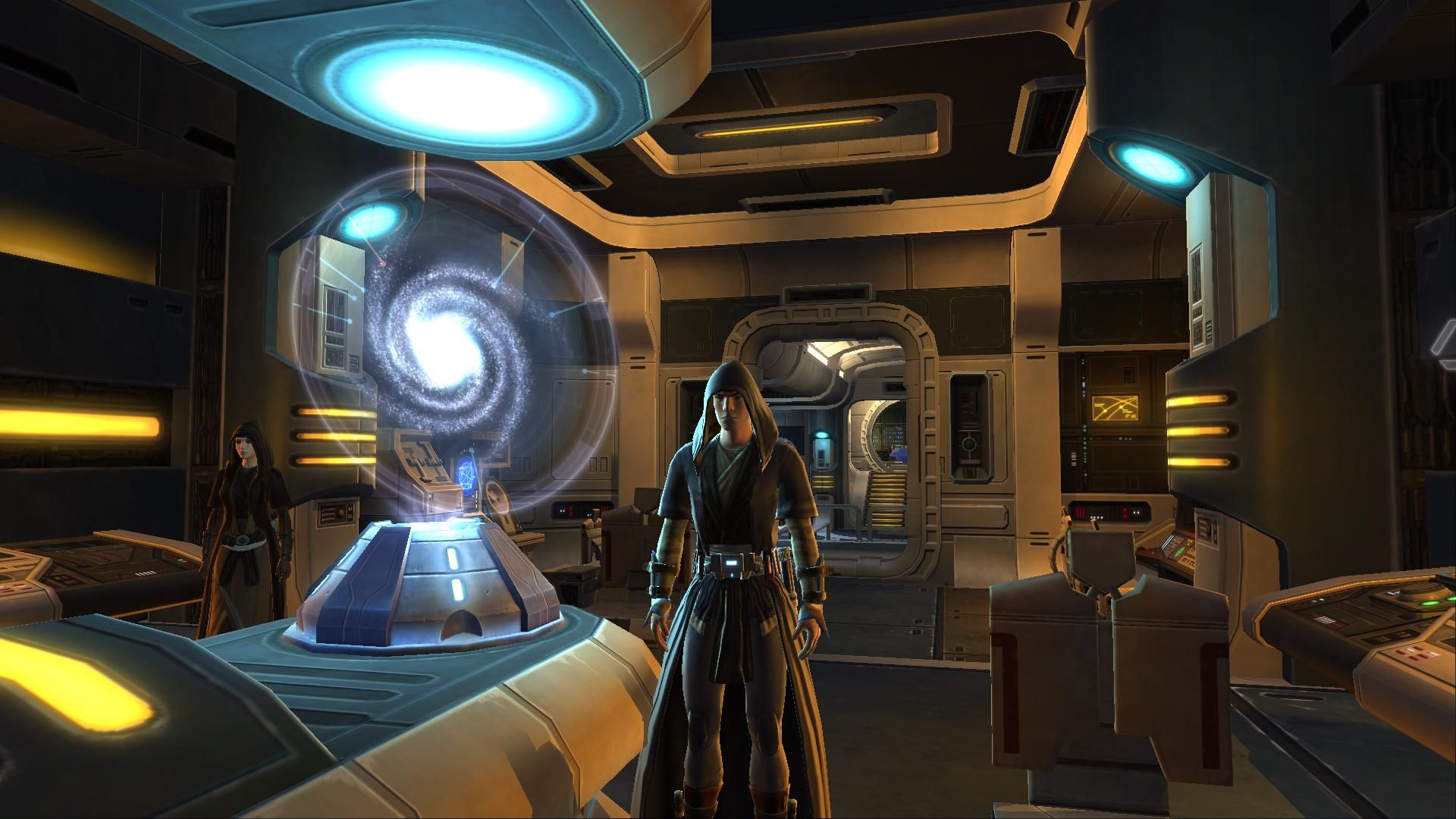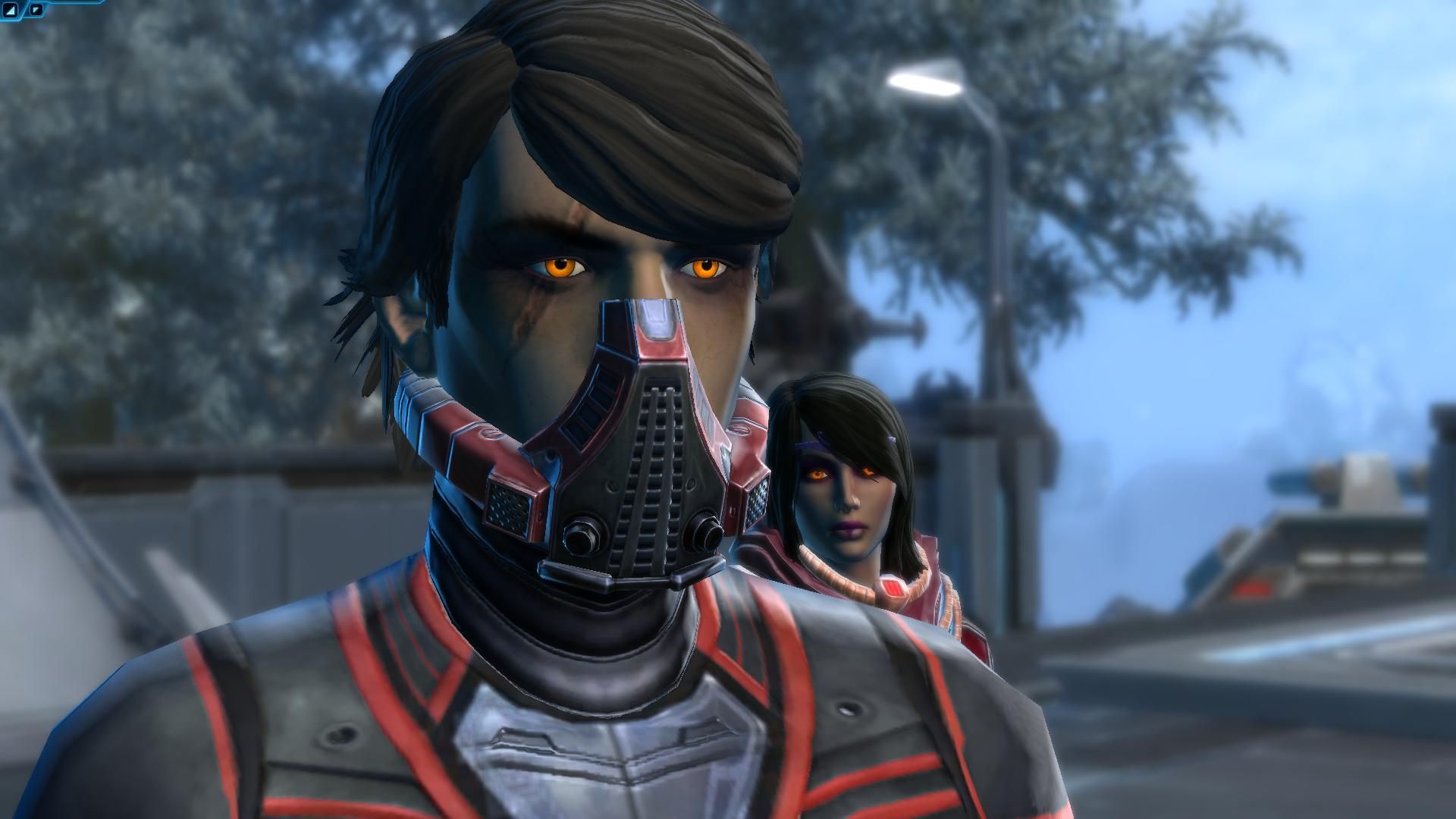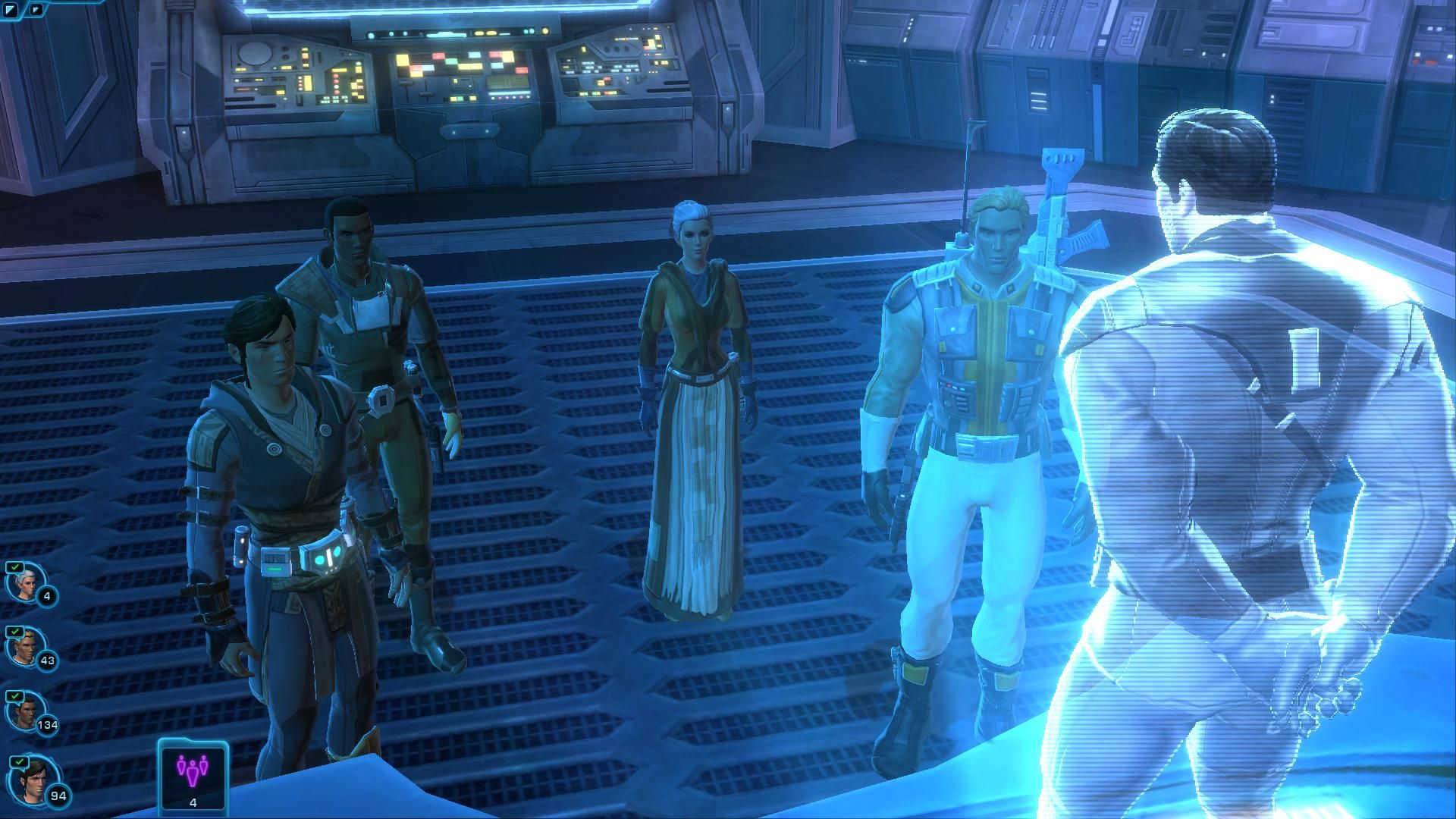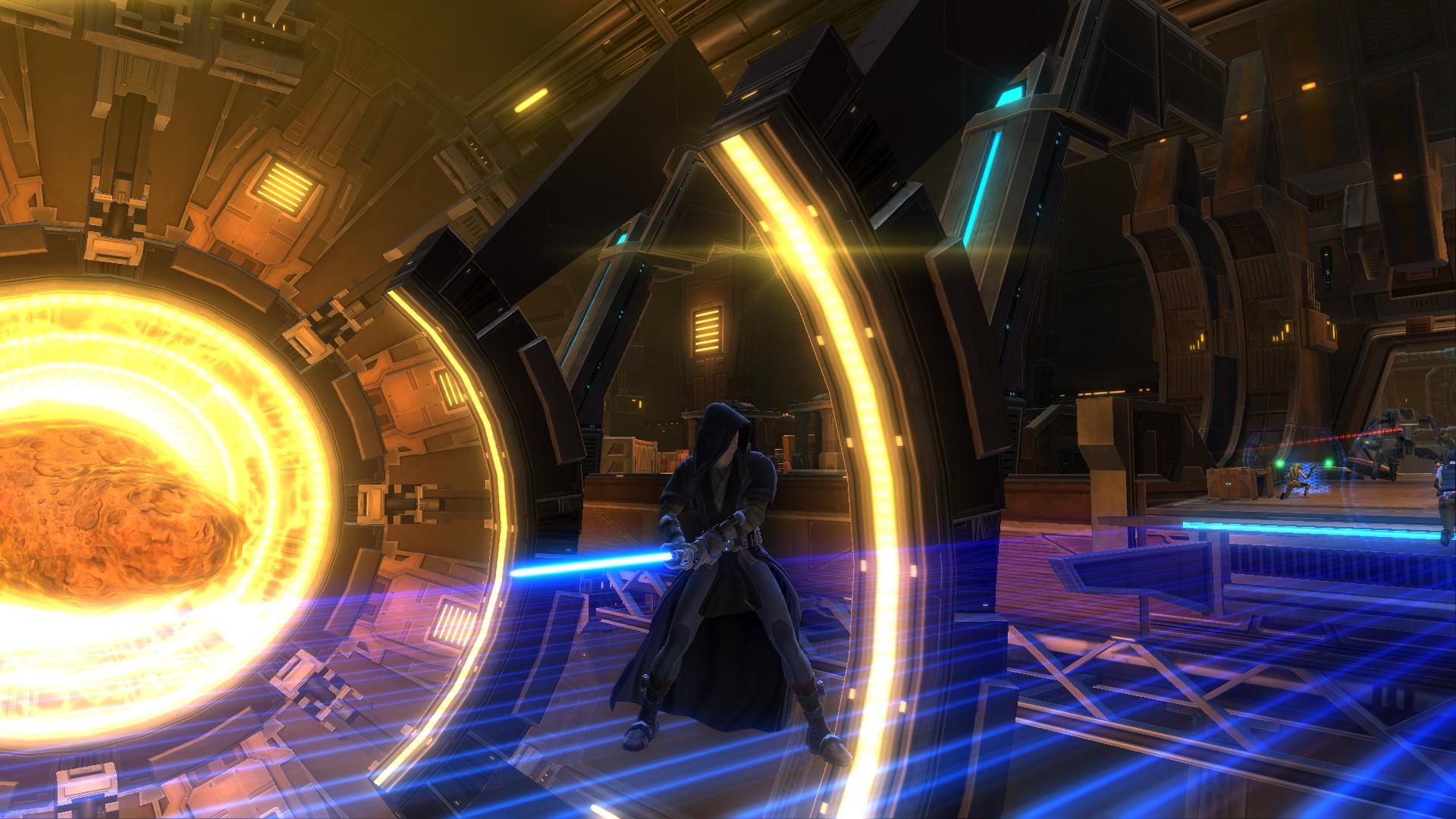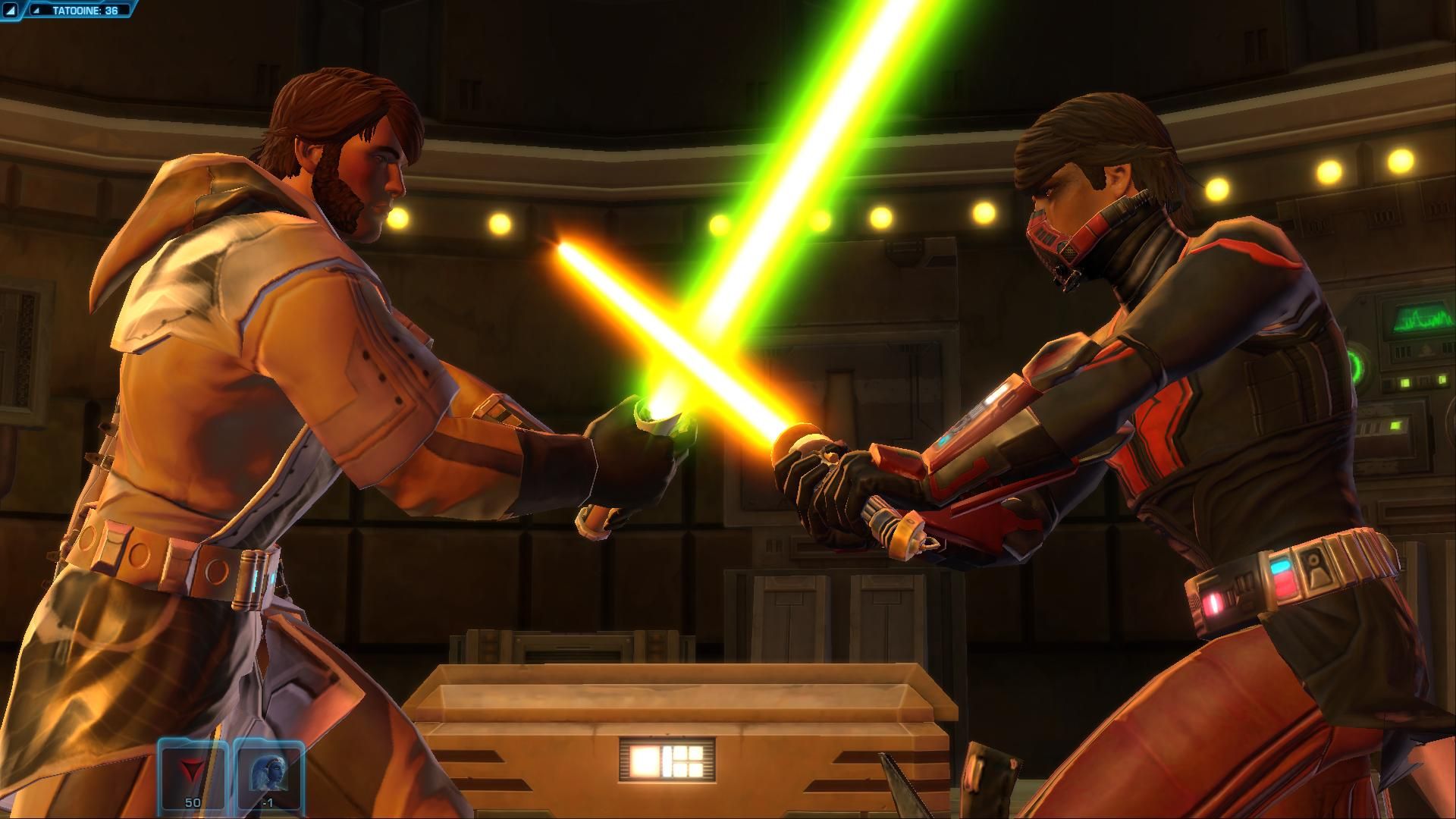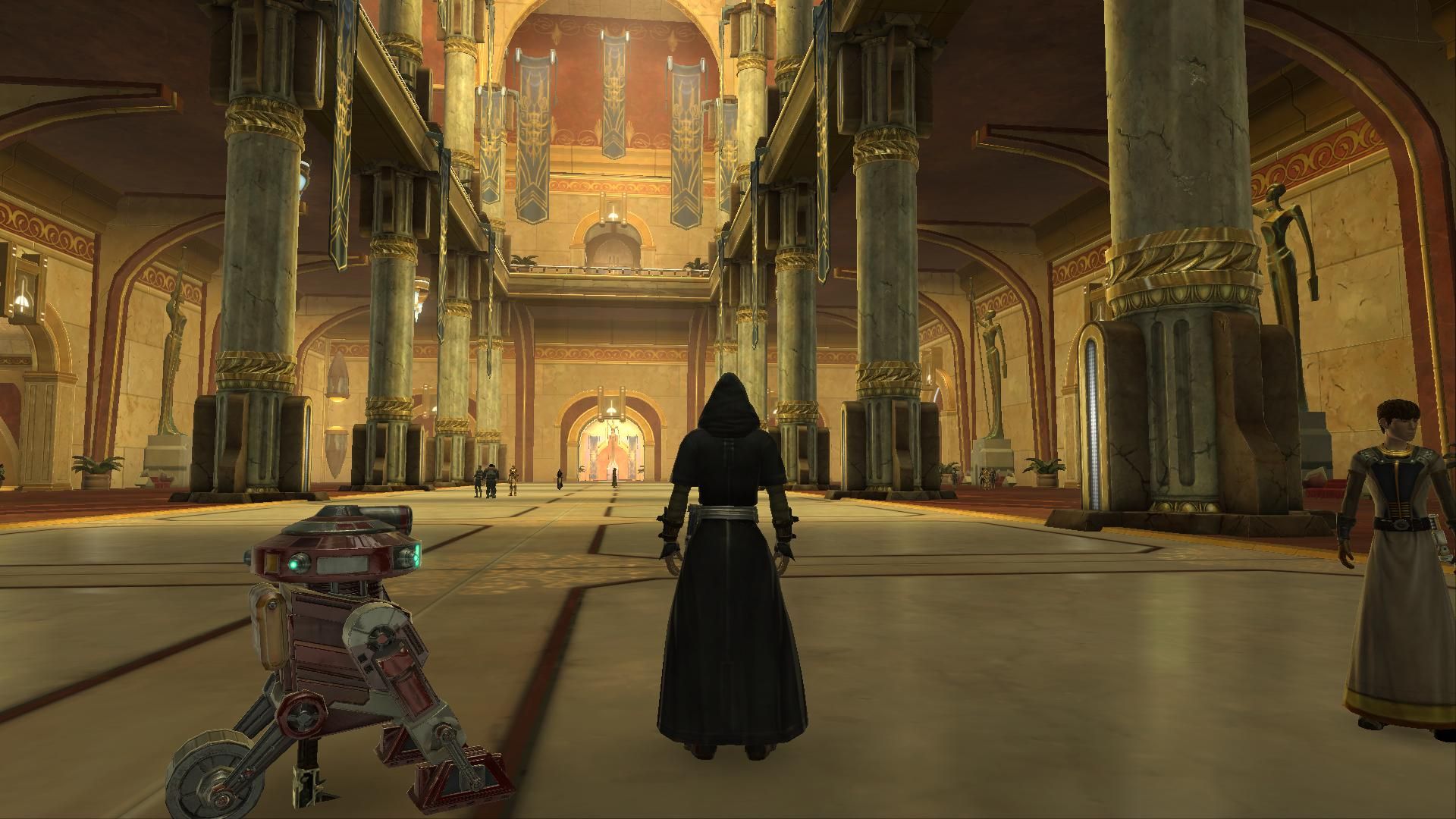The "Will this game kill World of Warcraft?" question gets asked by thousands of hungry mouths at every release of a major MMORPG. If you take it literally, considering "kill" as taking enough players away from Blizzard's ten ton gorilla to send it out of business (a thing that would probably drag Blizzard and Activision down, as well), then the answer has always been invariably and inevitably "no". The same goes, most probably, for Star Wars: The Old Republic, as well.
World of Warcraft launched in market conditions that are pretty much unique in the history of MMORPGs, and probably won't happen again. This means that the game can easily carry on with the inertia made of a playerbase counting several millions, and it's very unlikely for a single game to manage to take a fatal percentage of that playerbase in one fell swoop. That said, there's more to the question that the literal termination of Blizzard's flagship title.
The biggest reasons why almost every major MMORPG launched in the last few years failed at placing a sizable hit on WoW's success are lack of polish and lack of content. MMORPG developers and publishers have fallen into the habit of releasing their games in varying states of relative disrepair and with too little content to keep their early adopters engaged before the implementation of the first large updates.
The obvious result is that most of those early adopters get frustrated fast, and many of those that show more patience still get bored because they have nothing to do when they log in. The natural reaction to such a situation is to head back to games that already have several years worth of content and polish, like WoW. The negative press and word of mouth generated in the process also prevents more users from joining the new games, with disastrous consequences on their popularity and on their chances to compete against the big neighborhood bully.
Things started to change at the beginning of this year: Rift, by Trion Worlds, launched with a relatively solid build and a good amount of content, and for the first time in years not only a pay to play game managed to take a sizable amount of users away from World of Warcraft, but it also managed to keep a large part of them. It wasn't a crippling blow, as Rift wasn't extremely hyped and didn't nearly have the marketing able to compete with Activision, but the giant started bleeding.
Rift demonstrated that the siren call of World of Warcraft, that seem to invariably bring back many of those that leave Azeroth, can be countered with polish and content.
Despite some fully predictable and expected queues and the fact that some seem to think that a MMORPG requiring valid billing information before granting access (as it has always been for basically every pay to play MMORPG since the dawn of the genre) has suddenly become breaking news, Star Wars: The Old Republic easily tops the level of polish and the amount of content that Rift had at launch, in addition to the assumption that it's probably the most hyped MMORPG since the dawn of the genre and has the full marketing and financial power of Electronic Arts behind it.
There are quite a few reasons to believe, at the moment, that its effect on WoW's population will be much more radical and just as stable as Rift's, unless something horrible happens in the next few weeks and months.
According to Cowen & Company's analyst Doug Creutz between one and one and a half million gamers populated the early access of SWTOR even before the game officially hit the shelves right in time for Christmas. Where do you think most of those come from? I'm sure you guessed it right. They come from World of Warcraft, turning the flash wound left by Rift into a quite serious one.
BioWare managed to create a MMORPG that feels familiar enough to WoW players to avoid turning them off with mechanics that feel excessively alien to them, but at the same time brought to the table enough innovation and evolution that those that are tired of the old Blizzard soup probably won't feel like they're being forced to eat it again, and that might be the winning card of the hand.
The wound opened by Rift and worsened in a still undisclosed amount by Star Wars: The Old Republic is just the most visible. While Blizzard is still updating the game regularly with new content and minor graphical updates, one fact is undeniable: World of Warcraft is old. It launched with an engine that already looked dated in 2004, and it has not aged well in time. Now even free to play games with a relatively small budget look better, and that's another big factor.
The MMORPG market is seeing an increasingly large influx of free to play and hybrid MMORPGs that are gaining more and more popularity. While each of them, considered separately, is little more than a scratch on the gargantuan mass of World of Wacraft, they definitely managed to worsen the bleeding of WoW's users when considered as a whole group.
The wound is possibly going to become even more serious through next year and into 2013. The future has never looked as crowded with possibly solid MMORPG releases as it does now: Guild Wars 2, TERA, The Secret World, Warhammer 40,000: Dark Millenium Online, ArcheAge, Blade & Soul and Wildstar are just a few of the many looming over the horizon and ready to stab at WoW's already opened wounds to grab some of it's tired playerbase.
Danger doesn't even come just from outside, as the big cannibal Diablo III is around the corner, as well. It's not a MMORPG, but it has a very strong online component, and it's not one bit hard to predict that a substantial amount of WoW players will be absorbed by it to the point of terminating their visits to Azeroth, at least for a while. I don't even feel it's too far fetched to think that Blizzard intentionally delayed Diablo III into 2012 to avoid it hitting WoW's population in the same timeframe of SWTOR. BioWare's MMORPG is probably hitting Blizzard's quite hard by itself, just imagine what would have happened if it did it at the same time as Diablo's new chapter.
When the servers start feeling more and more empty, it's very hard to reverse the trend, as more players are tempted to quit.
Of course, Blizzard knows this very well, and it's doing whatever it can to stop the bleeding, or at least to slow it down. The announcement of next year's expansion, Mists of Pandaria (seriously, turning an April's Fool in an expansion?), and it's Pokémon-cloning pet content, the promise of free Diablo III for those that pledged their alliance to WoW for the year to come, the first twenty levels of the game made free to play...all those actions together show what can easily be defined as a last-ditch attempt to turn around a decline that seems pretty much irreversible.
Star Wars: The Old Republic seems to have the full potential to be a pivotal element in that decline. It's just as mainstream as World of Warcraft, or even more so. It's initial release seems polished and solid enough to avoid frustrating its early adopters, and it has enough content to avoid boring them. BioWare added it's "magical" storytelling touch, that definitely doesn't hurt. LucasArts poured hours upon hours of masterfully crafted voice acting into the cauldron and Electronic Arts injected enough marketing money and power into the process to play the game on an even ground against Activision Blizzard's gargantuan advertising department and it's guest star Chuck Norris.
That said, let's go back to the initial question. Will Star Wars: The Old Republic kill World of Warcraft? Most probably the answer is still "no", especially not by itself. Even if SWTOR might deliver a very solid blow to Blizzard's MMORPG, it will take a lot more time and many more games to finally bring it down. Even if it were to lose multiple millions of users, it has a long way to go before it'd stop being profitable, forcing Blizzard to take extreme steps like going hybrid to fully stop the bleeding. If that were to happen, we could say that the king has been at least dethroned, if not killed, but for now we're moving in the realm of science fiction.
One thing, though, we can safely say: for the first time after Rift demonstrated that the king can be wounded and can bleed, another MMORPG has the means to deliver an even deeper wound that might revitalize the stagnant MMORPG market. More will most probably follow in the next couple of years.
I'm sure that many World of Warcraft players won't like to read this. That's quite understandable. No one likes to read that the world in which he lives a second life and in which he invested so much time, money and emotions, might be about to face a period of severe decline.
They can take heart in the fact that competition is always good for quality. Blizzard has been allowed for too long to sit relatively idly on WoW's success, shunning innovation and evolution in favor of just adding more content that is really starting to feel stale.
With solid competitors like Star Wars: The Old Republic, the easy way out will not be viable anymore, and even marketing tricks like Diablo III for free and more colorful pets will become less and less effective. They will have to step up their game radically, and even if some servers might go the way of the dodo due to decreasing population, World of Warcraft players will possibly benefit from real, solid improvement and evolution.
To conclude, the answer to the initial question is simple and complex at the same time: Star Wars: The Old Republic will not "kill" Wold of Warcraft, but it might very possibly deliver a blow that will change Blizzard's game and the MMORPG market as a whole. Christmas 2011 will be more lonely and less lively in Azeroth, but thanks to that, Christmas 2012 might actually hail a better Azeroth, and a better, more fluid and competitive environment for MMORPG gamers, regardless of their virtual world of choice.
We can only hope.

